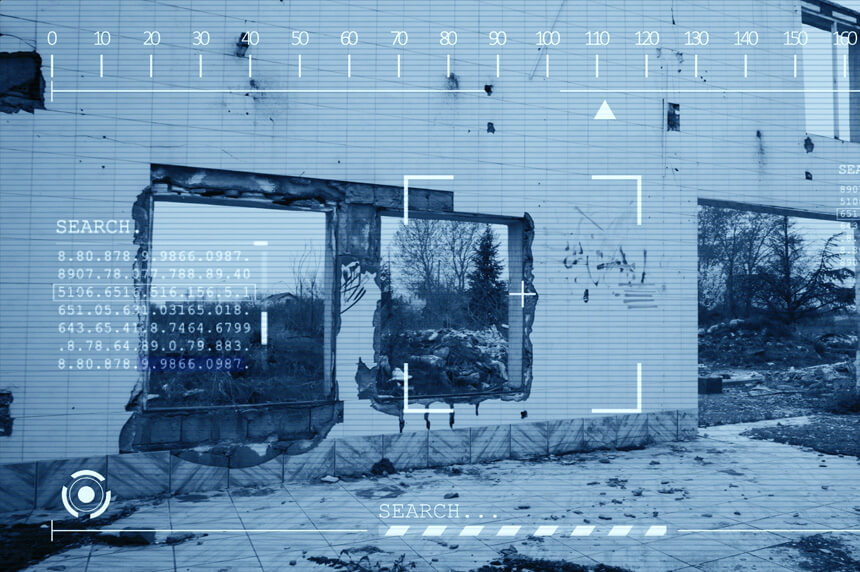Stay up to date with the latest OSINT news from around the world
This week in open-source intelligence (OSINT) news, we examine the ethics of open-source research, how OSINT became a crucial tool in the Russian-Ukrainian War and how OSINT is used to help clear mines to protect civilians in war zones. On the domestic side, an author suggests using AI as a tool to prevent future classified leaks.
This is the OSINT news of the week:
The ethics of OSINT
As the war in Ukraine rages on, open-source intelligence (OSINT) has been vital in piercing the fog of war. The OSINT community has successfully tracked military movements, identified alleged war crimes and documented equipment losses. But many newer, amateur researchers in the rapidly growing community have overlooked the ethical implications of their activities, potentially causing unintended harm. Professor Miron Lakomy at the University of Silesia, Poland, purports that amateur investigators have been quick to share unverified information on social media, driven by the power of "likes," which can lead to misleading the public or putting innocent individuals at risk.
According to Professor Lakomy, the influx of novice OSINT investigators, attracted by the 'glamor' of social media popularity, has led to an alarming neglect of vital ethical considerations such as accuracy, privacy, and safety. If speed trumps thoroughness and care, it could lead to the spread of misinformation and potentially harmful exposures. Addressing these ethical concerns is crucial to maintaining the public's trust in open-source intelligence and ensuring investigators don't become instruments in information warfare or a source of new risks.
“The global community faces cross-jurisdictional dilemmas, especially those related mainly to personal data protection and ways of processing sensitive or leaked content.”
— Miron Lakomy, The Scientific American
How Ukraine shifted the warfare role of OSINT
Open-source intelligence has become a crucial tool in the ongoing conflict in Ukraine, revealing the evolution of military intelligence practices in the digital age. The ubiquity of high-resolution satellite imagery and social media platforms has greatly improved the quality and quantity of information available to military leaders and security analysts, significantly reducing the previous reliance on secret collection methods. This has played a significant role in the Ukraine war, where real-time intelligence from commercial satellites and social media platforms like TikTok, Telegram and Twitter has been used to track troop mobilization and movements of heavy equipment.
The successful integration of traditional military intelligence with open-source intelligence in Ukraine's ground operations marks a significant shift in warfare. Harinder Singh identifies three key factors that have contributed to this: the willingness of Western nations to share strategic and tactical-level intelligence with Ukraine, the utility of commercial satellite imagery in tracking and countering the Russian advance, and the increasing importance of OSINT and online apps for enhanced situational awareness. Despite the value of open-source intelligence, traditional intelligence practices such as HUMINT (human intelligence), SIGINT (signals intelligence), IMINT (imagery intelligence), among others, are still necessary to understand an adversary's intent. As the digital age advances, the intelligence landscape will continue to evolve, demanding a careful reassessment of the relationship between traditional and new intelligence tools, and their interplay with secrecy and transparency.
“Amid this backdrop, lawmakers, policymakers and military practitioners might have to re-assess the relationship between the traditional and new tools of intelligence, and their inter-se relationship with respect to secrecy and transparency.”
— Harinder Singh, Manohar Parrikar Institute for Defence Studies and Analyses
OSINT for civilian protection
OSINT is helping civilian groups clear mines in Ukraine. Organizations like the HALO Trust, a nonprofit specializing in mine clearance, have used OSINT to create a database of areas containing landmines, using information from social media platforms to locate and remove unexploded remnants.
Social media, particularly Twitter, can be leveraged to locate landmines by using advanced search operators, such as geolocation and specific keywords enabling individuals and organizations to retrieve tweets posted from a particular location. Combining the social media data with additional sources like the Live Universal Awareness Map can display targeted mine locations. OSINT and social media are playing a critical role in mine clearance operations and ensuring the safety of civilians and aid workers.
“If you don’t know where to start your geo-search and you’re not familiar with the current war zones of Ukraine) you can check the Institute for the Study of War and AEI's Critical Threats Project interactive map, which shows Ukraine's assessed control of terrain and is updated daily.”
— Nihad Hassan, Cybernews
Could AI help the government prevent leaks?
Brian Drake, the federal chief technology officer of Accrete.AI Government, argues that the government is not effectively assessing security risks due to the lack of proper data sources. The current security vetting process relies on manual processing of various data, but fails to consider important sources like anonymous discussion forums, fake social media personas or encrypted communication platforms where insider threats often operate. Drake believes that the government should include open sources in the Continuous Evaluation Program (CEP), reduce reliance on cleared positions and employ artificial intelligence (AI) tools for data analysis to enhance security.
Drake proposes three key solutions. First, he suggests establishing an agency focused on open source analysis, which would help detect insider threats in online platforms where they often operate. Second, he recommends shifting missions toward open-source intelligence, reducing the need for cleared personnel. Finally, he emphasizes the need for AI-powered analytics to enable continuous and comprehensive security clearance evaluation, as manual processes are limited and inefficient. Drake argues that adopting AI for background checks and insider threat detection would improve security and reduce the risk of future leaks.
“We owe assurances to trusted employees that the person sitting next to them is not working for our adversaries or seeking fleeting fame on a fanboy website.”
— Brian Drake, The Cipher Brief
Every other week, we collect OSINT news from around the world. We continue to keep a close watch on Russia's war in Ukraine, especially on Twitter. We’re also gathering information on cyberthreats, federal intelligence strategies and much more. Find us on Twitter and share the OSINT news you’re keeping up with.
The most security-conscious government agencies, law enforcement organizations and enterprise companies rely on Silo for Research to power secure, anonymous OSINT investigations on the surface, deep and dark web. Learn more about Silo for Research here.
To keep up to date on the latest OSINT and cyber security news, join our newsletter below.


